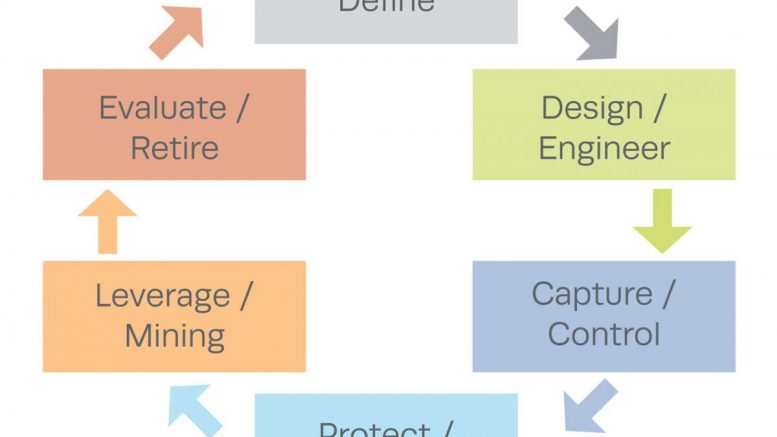A well-articulated Master Data Management (MDM) plan can help establish and implement data standards, tools and policies critical to everyday enterprise operation. According to InfoTech Magazine, the key to better data asset monetization and master data management is accurate data transfers and across the board accessibility. MDM technology is descriptively more accurate, consistent and exhaustive. Depending on how the information is maintained and accessed, the MDM implementation process can greatly define how suppliers, customers, products, and employees correspond with each other.
Common business problems that can be arrested with a solid Master data implementation include credit risk management issues, market segment challenges, compliance consistency and data integration problems arising from activities like mergers and acquisition. Overall, the implementation of MDM requires serious planning, technological outlay, and sound governance. Companies also need to come up with strategies and visions that match the needs of the business and the forces behind them. According to Oracle Insight, the disruptive effects of Master Data Management can positively impact the following key sectors of the economy:
• Consumer packaged goods
• Retail and distribution
• Technology
• Health and life sciences
• Manufacturing
• Media and utilities
• Financial services
• Public sectors
Companies operating in the Consumer Packaged Goods (CPG) sector face a host of operational challenges, from fast-changing markets and management of segmented information stored in disparate systems across various nodes to increased competition. To stay afloat and profitable, these companies must continually launch profitable products; improve their distribution networks and operational efficiency. Implementing strategies that encourage proper data integration can help CPG companies gain insights into real-time customer and product data as well as holistic views of sales and inner operations. The same effects can be felt in the expansive retail and distribution sectors. MDM tools can help retailers rationalize product information in order to promote sound decision making.
Some of the retail goals can be achieved through increased strategic sourcing and enhanced time to market. In the information critical health and life sciences sector, a number of companies have adopted MDM to drive data needs across all spheres of the organization. The end result often means proper management of regulatory requirements, accelerated drug development cycles, and increased revenues. MDM can also be deployed to support a reliable regulatory framework from where health sector companies can cost-effectively, enforce compliance, avoid penalties and manage physicians. Public sector entities like national and local governments, public safety concerns and justice organizations usually face unique challenges that can be streamlined with MDM implementation.
To institute transparency and operational efficiency in the public sector, MDM can be used to leverage CRM tools and case management efforts. One of the areas that can be monitored on a single point of view is the citizenry tax information and compliance. The Hi-tech and manufacturing sectors are highly diversified and open to changes brought by innovation, competition and supply and demand curve. In addition to finding new revenue streams to drive growth, successful Hi-tech and manufacturing concerns must pay close attention to product commoditization. The sector needs MDM to provide the base to rationalize data required to execute various processes. For example, implementing stringent customer-oriented processes and synchronizing demand driven supply lines.
How to gain a competitive edge with Profisee MDM solutions
A lot of small and large global enterprises are still experiencing challenges when they try to synthesize separated data stored across various departments, applications and systems such as CRM and ERP. The need to craft an effective master data management strategy entails improving the consistency of work and quality of key data assets. On the other hand, the process of implementing effective Master Data Management Plan in order to achieve organizational goals requires rigorous organization, ranging from defining a robust technical architecture to choosing the right skill set and policies that fit the set objectives. The most defining key data domains incorporations include location data, customer data, and product data. Profisee MDM solutions can help businesses define:
• Key Master Data Management business goals
• Tools and technologies that support MDM framework
• Select policies, processes, and manpower to oversee MDM implementation
• Business data that needs to be mastered
• Architectural blueprints for data modeling, data integration, and MDM
The benefits of creating a common Master Data far outweigh cost repercussions and other challenges that may arise from data consolidation and realization. With a proper program and plan of action, enterprises can use MDM to eliminate duplication of marketing information to various recipients, obtain consolidated bills and save money and shelf space. In case of the latter, the savings will accrue from consolidated views of items obtained across various organizational structures.
The Profisee MDM is well articulated in the following areas: governance, technology, process, policy, measurement, and organization. At the organizational level, a prudent master data management strategy can help selectors pick the right people, from master data owners down to data stewards. On governance issues, the MDM program can provide crucial directives for managing organizational aspects such as principles and divisions.



Be the first to comment on "How to Implement a Master Data Management Strategy in Your Company"